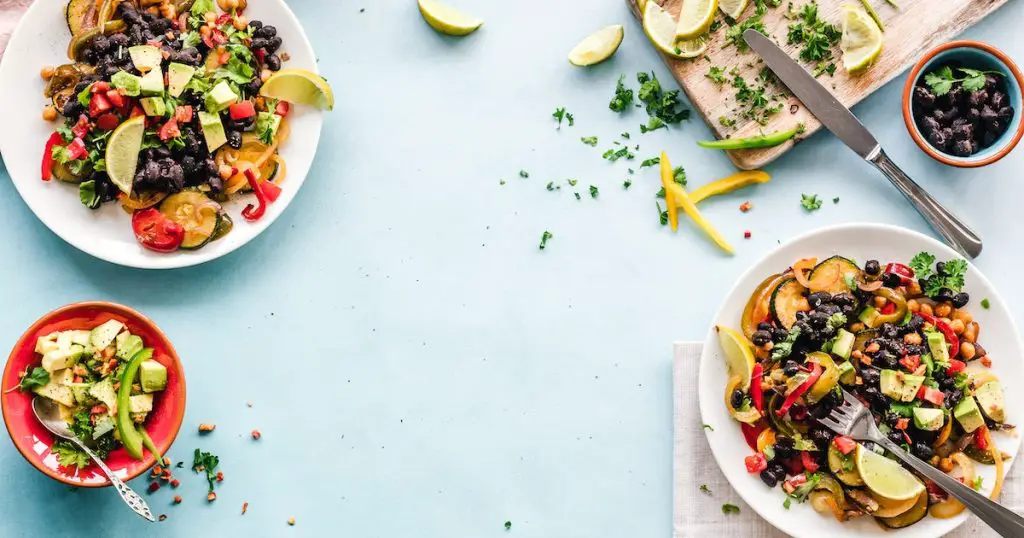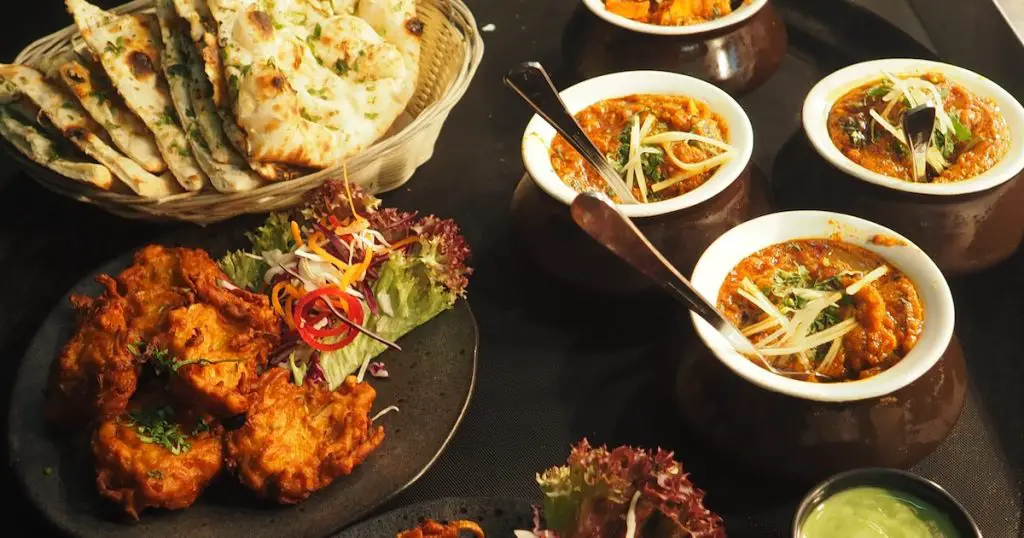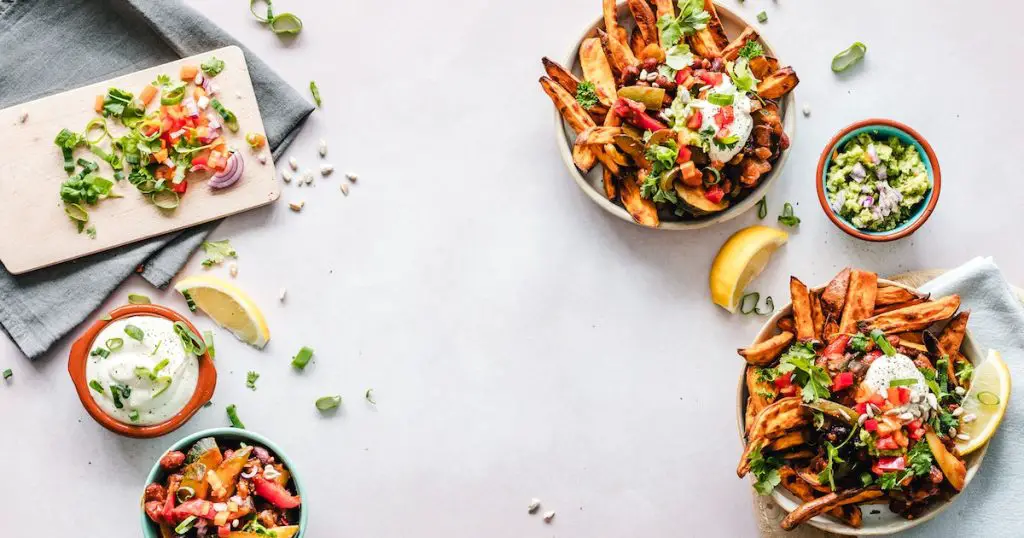Prescott, a picturesque city in Arizona, carries a rich history that’s deeply intertwined with its vibrant food and cuisine culture. How Prescott’s history has influenced its food and cuisine culture is a tale that weaves together Native American traditions, the mining era, agriculture, and much more.

In this culinary journey, we will explore the various historical factors that have contributed to the city’s unique gastronomic identity.
The Indigenous Influence
The indigenous communities in and around Prescott have had a lasting influence on the region’s food and culinary practices. Rooted in a deep understanding of the local ecosystem, indigenous cooking methods and ingredients offer a rich and diverse palate that has shaped the culinary traditions of the area.
Utilizing native plants, game, and grains, indigenous cuisine emphasizes sustainability, seasonality, and a connection to the land. These principles continue to inspire modern chefs in Prescott, who often incorporate indigenous elements into contemporary dishes.
The influence extends beyond ingredients, as indigenous cooking techniques and communal eating practices have also found resonance in Prescott’s food culture. The indigenous influence in Prescott is a celebration of heritage and wisdom, a culinary dialogue that continues to enrich and guide the city’s gastronomic journey.
Native American Culinary Traditions
The indigenous tribes of Prescott were masters of utilizing local ingredients. They expertly crafted dishes using corn, beans, squash, and local meats. The influence of these tribes is still felt today in the region’s cuisine, particularly in the use of native herbs and seasonings. This culinary tradition, often referred to as the “Three Sisters,” remains a vital part of Prescott’s food scene.
In recent years, chefs and food enthusiasts in Prescott are embracing indigenous cooking techniques, with many restaurants offering dishes inspired by Native American recipes. The combination of traditional and modern culinary approaches is forging a new path in the city’s gastronomic landscape.
Ingredients and Cooking Methods
The native tribes had a profound understanding of their environment. They knew how to harness the natural bounty, employing methods like stone grinding and roasting over open fires. Ingredients such as pinon nuts and agave were staple parts of their diet.
Today, some local chefs are resurrecting these ancient techniques, offering dishes that connect diners to Prescott’s rich indigenous past. From stone-ground corn tortillas to meats roasted on open flames, these practices provide a glimpse into the culinary traditions that have shaped the city’s food culture.
The Continuation of Traditional Dishes
The preservation of indigenous culinary traditions is more than just a historical tribute. It’s an ongoing part of Prescott’s culinary identity. Organizations like the Museum of Indigenous People in Prescott work to educate the community about these time-honored practices.

Local events like the Prescott Indian Art Market celebrate indigenous art and cuisine, allowing locals and visitors to experience the flavors of the past in a contemporary setting. This amalgamation of history and modern culinary artistry sets Prescott’s food scene apart from many others.
The Mining Era
The mining era in Prescott, marked by the discovery and extraction of valuable minerals, brought a significant influx of miners and settlers to the area. This movement of diverse people influenced the local food culture by introducing new culinary traditions, ingredients, and cooking techniques.
The hearty meals prepared in mining camps, often utilizing available local resources, became a staple of Prescott’s culinary identity. The demand for filling and nutritious food led to the creation of dishes that are still beloved today.
Furthermore, the mining era’s social gatherings and community feasts laid the foundation for a food culture that values camaraderie and shared experiences. In Prescott, the echoes of the mining era can still be tasted in its robust and authentic flavors, a legacy that pays tribute to the pioneers of the past.
Introduction of Foreign Foods
The arrival of miners from Europe, Asia, and other parts of America during the mining boom introduced a diverse range of ingredients and culinary techniques. Miners needed hearty meals, and Prescott’s food establishments adapted to serve dishes that were both satisfying and influenced by the miners’ home cuisines.
Local bakeries began offering European bread, and Asian spices found their way into local markets. This blend of flavors can still be experienced in some of Prescott’s historic restaurants, which continue to serve dishes reminiscent of that era.
Adaptation of Miners’ Diet
The miners’ demanding lifestyle required substantial meals, and Prescott’s food culture evolved to meet these needs. Traditional mining foods like pastries and stew became staples in local dining establishments. The use of preserved and canned goods, essential for the miners’ long shifts, also influenced the local culinary scene.
These culinary adaptations continue to resonate in Prescott’s modern dining culture, reflecting the city’s ability to blend history with contemporary tastes.
Culinary Innovation and Fusion
Innovation and fusion became defining features of Prescott’s mining-era cuisine. Local chefs began experimenting with new flavors, creating dishes that were uniquely Prescott. From incorporating foreign spices into traditional recipes to creating fusion dishes that bridged cultures, this era of culinary innovation laid the groundwork for Prescott’s modern food scene.
Famous restaurants in Prescott like The Palace reflect this fusion, offering menus that showcase the city’s rich culinary heritage while embracing contemporary flavors.
The Impact of Agriculture
In Prescott, the agricultural roots run deep, profoundly influencing its food and cuisine culture. The choices of farming practices, whether traditional or innovative, and the selection of crops have created a culinary landscape that reflects the region’s agricultural heritage.
From fresh vegetables to locally grown grains, the connection between the farm and the kitchen is palpable. The rise of the organic movement has further strengthened this bond, aligning the city’s culinary practices with global trends in sustainable farming.
This commitment to agriculture not only enhances the flavors and freshness of the food but also fosters a community spirit centered around shared values and a love for the land. The impact of agriculture in Prescott is more than just a supply chain; it’s a cultural identity that continues to flourish and inspire.
Farming Practices and Crop Selection
Early farmers in Prescott recognized the potential of the region’s soil, climate, and water resources. They cultivated crops like corn, wheat, and various fruits that have since become staples in the local diet. The selection of these crops was not merely practical but also shaped the very taste and character of Prescott’s food.

In addition to traditional farming methods, modern farmers in Prescott are exploring innovative agricultural techniques. This continuous evolution of farming practices has kept Prescott’s cuisine vibrant and diverse, with farm-to-table restaurants like Farm Provisions proudly featuring locally-sourced produce.
Influence on Local Menus
Prescott’s agricultural bounty has greatly influenced local menus. Seasonal produce, availability of fresh ingredients, and the strong connection between farmers and chefs have fostered a culinary landscape that celebrates local flavors.
Restaurants in Prescott often create menus that showcase the season’s best, reflecting a culinary philosophy that honors the land and its products. This relationship between farm and table has not only shaped Prescott’s dining scene but also deepened the community’s connection with its agricultural heritage.
Organic Movement
The rise of the organic movement in Prescott reflects a growing awareness of sustainable agriculture and its benefits. Farmers’ markets, organic shops, and community-supported agriculture (CSA) programs are flourishing in the region.
The demand for organic products has also extended to local restaurants, with many embracing organic ingredients and sustainable practices. This commitment to organics enhances the quality of food, adds to the overall dining experience, and aligns Prescott’s food culture with global trends in sustainability.
Prescott’s Ranching Legacy
Prescott’s ranching legacy is a central thread in the fabric of its culinary heritage. With a history deeply rooted in cattle and sheep ranching, the community has cultivated a distinctive gastronomic identity that reflects the flavors of the land. Signature meat dishes and local dairy products pay homage to the generations of ranchers who have shaped the area’s cuisine.
Whether it’s a succulent steak, slow-roasted lamb, or artisanal cheese, the tastes of Prescott’s ranching culture are unmistakable. The commitment to quality and tradition resonates in local eateries, preserving the ranching ethos in modern culinary practices.
In Prescott, the ranching legacy is more than a historical footnote; it’s a living, flavorful tradition that continues to nourish and inspire.
Influence of Cattle and Sheep Ranching
Cattle and sheep ranching were integral to Prescott’s development. Early ranchers introduced breeds that thrived in the local environment, and these ranching practices influenced both the economy and the culinary traditions.
Local dishes like steaks, stews, and roasts have their roots in ranching, and these traditions continue to be honored in establishments like The Barley Hound, where meat takes center stage.
Signature Meat Dishes
Prescott’s ranching heritage has given rise to signature meat dishes that reflect the region’s flavors. Whether it’s a succulent grilled steak, slow-cooked lamb, or a savory beef stew, these dishes are a testament to the ranching culture that has shaped the city’s culinary identity.
Local chefs pay homage to this heritage, using locally-sourced meats and applying both traditional and modern cooking techniques to create dishes that resonate with Prescott’s ranching past.
Dairy Development
Dairy farming has also played a significant role in Prescott’s food culture. The development of local dairies has led to a thriving cheese-making industry, with artisanal cheese producers like Thumb Butte Distillery offering a variety of high-quality products.
This embrace of local dairy has further enriched Prescott’s culinary scene, adding depth and diversity to the local menus, from appetizers to desserts.
The Railway Connection
The arrival of the railway in Prescott marked a significant turning point in the city’s culinary development. By connecting Prescott to distant cities and cultures, the railway introduced an array of exotic ingredients and culinary influences previously unavailable in the region.
These new additions fueled culinary creativity and allowed chefs to experiment with dishes from around the world. Furthermore, the railway fostered growth in dining establishments, making Prescott a hub for gastronomic innovation.
The influence of the railway connection can still be tasted today in the diversity and richness of Prescott’s food scene, a blend of local tradition and global inspiration that continues to delight residents and visitors alike.
Introduction of Exotic Ingredients
The railway connection allowed for the transportation of exotic ingredients that were previously unavailable in Prescott. Spices, tropical fruits, and specialty products from distant lands found their way into local markets.
These exotic ingredients inspired local chefs to experiment and innovate, creating dishes that blended international flavors with Prescott’s culinary traditions.
Influence of Other Cultures
The railway also facilitated cultural exchange, bringing people from various backgrounds to Prescott. This melting pot of cultures led to a fusion of culinary traditions.
Whether it’s the influence of Italian cuisine on pasta dishes or the integration of Mexican flavors into local favorites, Prescott’s culinary scene has been enriched by this cultural convergence.
Growth of Dining Establishments
With the railway came growth in commerce and tourism, and Prescott’s dining scene expanded accordingly. New restaurants, cafes, and eateries sprouted, offering a wide array of culinary experiences.
Historic dining establishments like The Hassayampa Inn’s Peacock Room began to offer fine dining experiences, reflecting the city’s growing sophistication and cosmopolitan flair.
World Wars and Military Influence
The impact of World Wars and military influence on Prescott’s food culture is a telling testament to the resilience and adaptability of the community. Wartime rationing necessitated inventive culinary solutions, giving rise to unique dishes and flavors that still resonate in modern-day Prescott.
The presence of military personnel during those challenging times introduced new culinary tastes and methods, further diversifying the city’s gastronomic landscape. The influence extended beyond the battlefield, as the military’s food preservation and revival techniques were adopted and adapted in local kitchens.
In Prescott, the echoes of war translate into a rich culinary heritage that tells stories of survival, transformation, and the unifying power of food.
Wartime Rationing and Dishes
Wartime rationing forced innovation and creativity in the kitchen. Limited access to certain ingredients led to the development of substitute dishes and the use of alternative cooking methods.
These culinary adaptations were not merely a response to scarcity but also a reflection of Prescott’s resilience and culinary ingenuity. Some of these wartime dishes have endured, becoming part of the local culinary repertoire.
Influence of Military Personnel
The presence of military personnel in Prescott brought new culinary influences and demands. Military bases like Fort Whipple attracted servicemen from different regions, each bringing their culinary preferences and traditions.
This influx of diverse tastes further enriched Prescott’s dining scene, leading to the creation of dishes that blended military and local culinary traditions.
Preservation and Revival Techniques
The necessity of preserving food during the war years led to a revival of canning, pickling, and other preservation techniques. These methods not only sustained the community during challenging times but also added new flavors and textures to local dishes.
Today, the revival of these techniques is part of a broader trend towards artisanal food production in Prescott, celebrating both tradition and innovation.
Modern Fusion and Globalization
The era of modern fusion and globalization has profoundly shaped Prescott’s culinary landscape. As the city became more connected with the world, international flavors found their way into the local kitchens. Chefs in Prescott started experimenting with ingredients and techniques from various global cuisines, creating innovative fusion dishes that are both exciting and reflective of the city’s cosmopolitan spirit.
This blend of culinary traditions has not only enriched Prescott’s dining scene but also represents a culinary dialogue between cultures, a delightful mingling that resonates with food enthusiasts and explorers alike. Whether it’s a sushi taco or a French-inspired Southwestern dish, the fusion of flavors is a hallmark of Prescott’s embrace of global culinary trends.
Global Influence on Prescott’s Cuisine
In the era of globalization, Prescott’s culinary scene has embraced flavors from around the world. From sushi bars to French patisseries, international cuisines have found a home in Prescott.
This global influence has not only broadened the culinary landscape but also fostered a spirit of creativity and experimentation. Local chefs are continually pushing boundaries, creating fusion dishes that celebrate the global nature of contemporary gastronomy.
Emergence of Fusion Cooking
Fusion cooking has become a defining feature of modern Prescott. Chefs are blending culinary traditions from different cultures, creating dishes that are uniquely Prescott while paying homage to international flavors.

Establishments like Tara Thai Cuisine exemplify this trend, offering menus that fuse Thai flavors with local ingredients, creating a culinary experience that is both exotic and familiar.
FAQ:
In this section, we will be delving into some of the most common inquiries and curiosities that surround our topic.
What is unique about Prescott’s food and cuisine culture?
Prescott’s food and cuisine culture is shaped by its rich agricultural and ranching heritage, railway connections, military influences, and embrace of modern fusion cooking. These factors have created a diverse culinary landscape that celebrates both tradition and innovation.
How has the railway connection influenced Prescott’s culinary scene?
The railway connection introduced exotic ingredients, facilitated cultural exchange, and contributed to the growth of dining establishments. It allowed for new culinary influences and broadened the city’s culinary horizons.
How did World Wars affect Prescott’s food culture?
The World Wars led to wartime rationing, which forced creativity in the kitchen. The military presence introduced new culinary preferences, and the revival of preservation techniques added new flavors and textures to local dishes.
What role has sustainability played in Prescott’s culinary practices?
Sustainability has become a significant part of Prescott’s culinary scene through the growth of the farm-to-table movement, the impact of environmental policies, and the embrace of sustainable practices in farming and dining. It reflects a commitment to quality, community, and environmental stewardship.
Where can I experience traditional Prescott cuisine?
Many local restaurants, cafes, and eateries in Prescott offer traditional dishes that reflect the city’s agricultural, ranching, and cultural heritage. Places like The Barley Hound and The Hassayampa Inn’s Peacock Room are known for their local flavors.
Conclusion
This is just the beginning of the fascinating exploration of Prescott’s culinary history. The subsequent sections will delve into the influence of agriculture, ranching, railways, military, modern globalization, sustainability, festivals, and more, weaving a captivating narrative of a city’s love affair with food.



Leave a Comment
You must be logged in to post a comment.